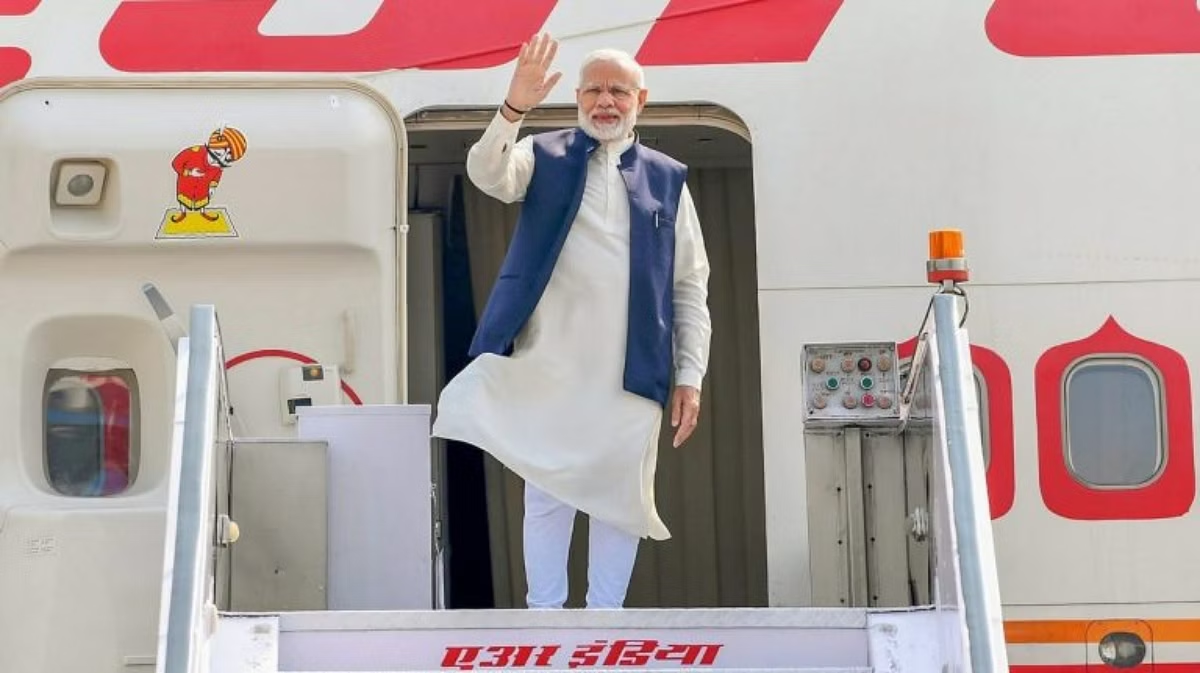Indian Prime Minister Narendra Modi’s plane traversed Pakistani airspace while returning from Poland to Delhi. The flight entered Pakistan’s airspace at 10:15 a.m. and remained within it for approximately 46 minutes.
Flight Details and Route
- Entry into Pakistani Airspace: 10:15 a.m. over Chitral
- Flight Path: The plane passed through the air control zones of Islamabad and Lahore.
- Exit from Pakistani Airspace: 11:01 a.m. over Amritsar
Civil aviation sources confirmed that the aircraft was closely monitored throughout its journey across critical regions of Pakistan before entering Indian airspace.
Pakistan’s decision to allow Indian Prime Minister Narendra Modi’s plane to traverse its airspace reflects a nuanced and strategic approach to international relations and diplomacy. Here are several potential reasons for this decision:
1. Diplomatic Relations and Cooperation
- Bilateral Relations: The decision could be part of an effort to maintain or improve diplomatic relations between India and Pakistan. Allowing Modi’s plane to pass through Pakistani airspace might be seen as a gesture of goodwill or a step towards easing tensions.
- Historical Context: Unlike 2019, when Pakistan denied Modi’s airspace request amid heightened tensions over Kashmir, the situation in 2021 or 2024 may have been more conducive to diplomatic flexibility. This change in stance could indicate a willingness to engage in dialogue and cooperation.
2. International Pressure and Norms
- Global Norms: International aviation norms generally encourage countries to facilitate flights from other nations, especially when such flights are part of official state visits or important diplomatic missions. Adhering to these norms can help maintain Pakistan’s image as a responsible member of the international community.
- Pressure from International Bodies: There may have been international pressure or requests from global organizations for Pakistan to allow the flight, especially if it was part of a significant diplomatic or international engagement.
3. Strategic Considerations
- Regional Stability: Allowing Modi’s plane to pass through might be part of a broader strategy to promote regional stability and reduce tensions. Such gestures can be seen as steps toward de-escalation and improved relations in the South Asian region.
- Reciprocity: In 2021, Pakistan had granted permission for Modi’s flight to the US. Allowing his plane to traverse Pakistani airspace in this instance could be seen as a reciprocal gesture, reinforcing the principle of mutual respect and cooperation.
4. Political and Economic Factors
- Political Calculations: The decision could be influenced by internal political considerations or the desire to project an image of diplomatic flexibility and leadership. It might also be part of a broader diplomatic strategy to foster better relations with major international players.
- Economic Implications: Facilitating flights through airspace can also have economic implications, such as potential revenue from overflight fees and the maintenance of air traffic management relationships.
5. Security and Logistical Reasons
- Security Assurance: Ensuring safe and secure passage for international leaders is crucial. Pakistan’s decision to allow the flight indicates confidence in its ability to manage and monitor airspace effectively.
- Logistical Coordination: Coordinating such flights involves meticulous logistical planning. Pakistan’s approval of Modi’s flight suggests effective communication and coordination between the aviation authorities of both nations.
Historical Context
The recent overflight by Prime Minister Modi’s plane contrasts with a notable incident from 2019. At that time, Pakistan denied a request from Modi to use its airspace for a flight to Germany, amid escalating tensions related to the Kashmir conflict. However, a significant change occurred in 2021 when Pakistan permitted a non-stop flight of Modi’s to traverse its airspace en route to the United States.
This development underscores a shift in diplomatic relations and airspace usage agreements between the two nations.
Summary
The recent passage of Prime Minister Modi’s plane through Pakistani airspace reflects a cooperative gesture between India and Pakistan, differing from previous restrictions imposed during periods of heightened tension. The flight’s smooth transit through Pakistani airspace, monitored by civil aviation authorities, marks a significant moment in the ongoing diplomatic engagements between the two countries.
Key Takeaways
- Flight Path: Modi’s plane entered Pakistani airspace over Chitral and exited over Amritsar.
- Duration: The aircraft stayed within Pakistani airspace for 46 minutes.
- Previous Incidents: Pakistan had previously denied Modi’s request for airspace use in 2019, but allowed it in 2021.
This event highlights the evolving dynamics in diplomatic relations between India and Pakistan, showcasing a shift from previous restrictions to a more cooperative approach in managing airspace transit.


Leave a Comment